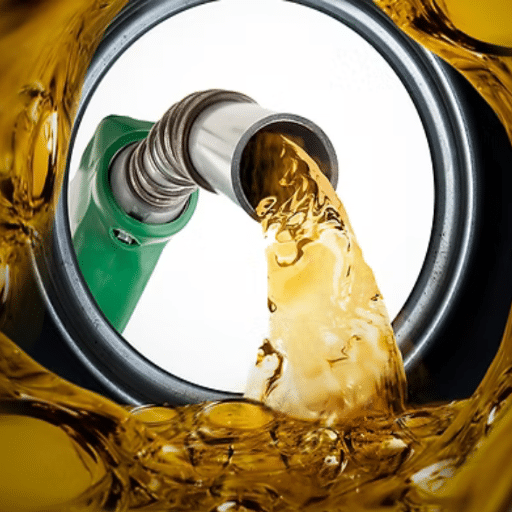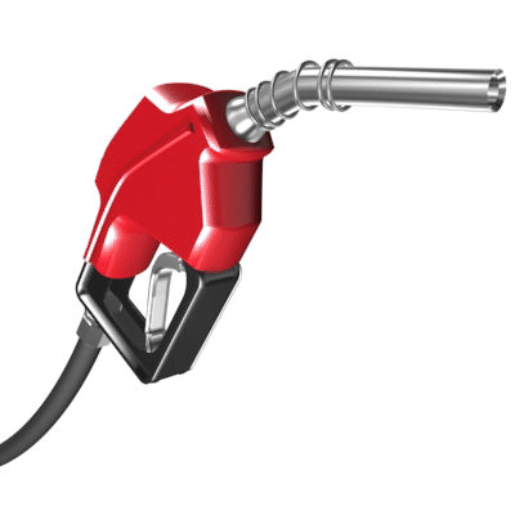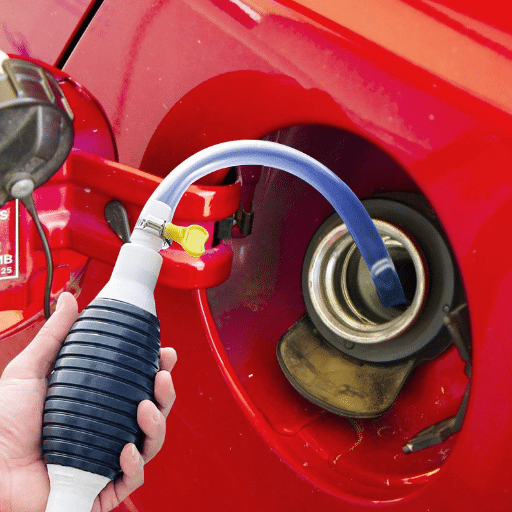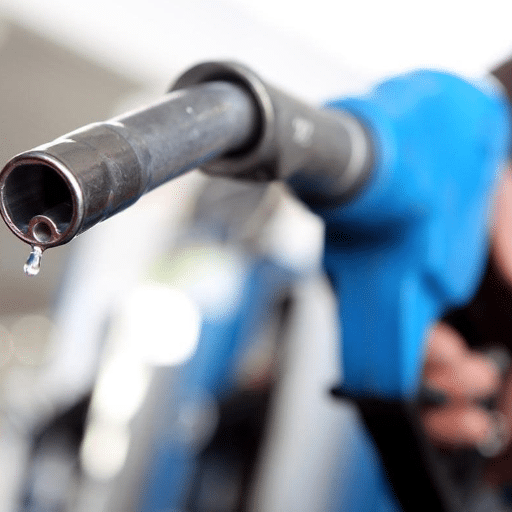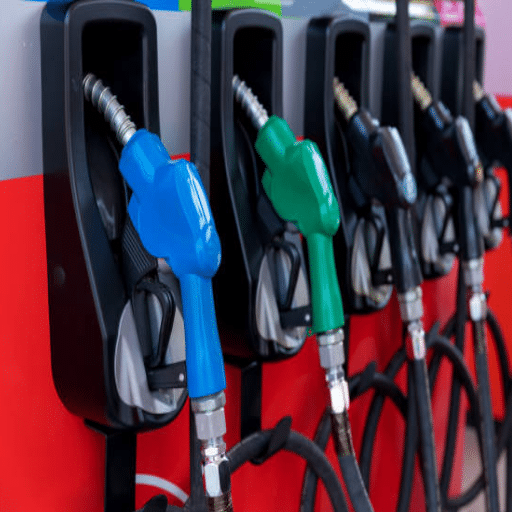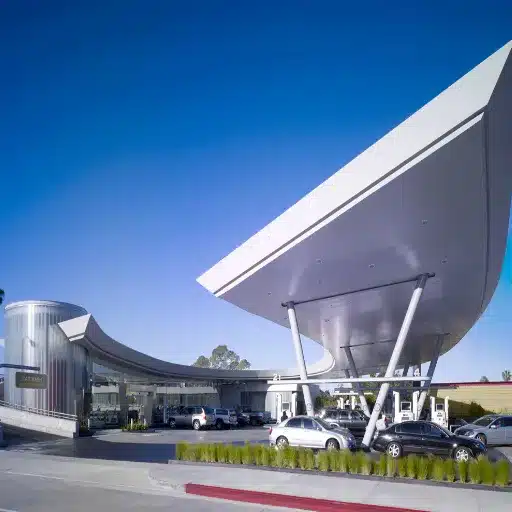Understanding the Risks of Pumping Gas in a Thunderstorm
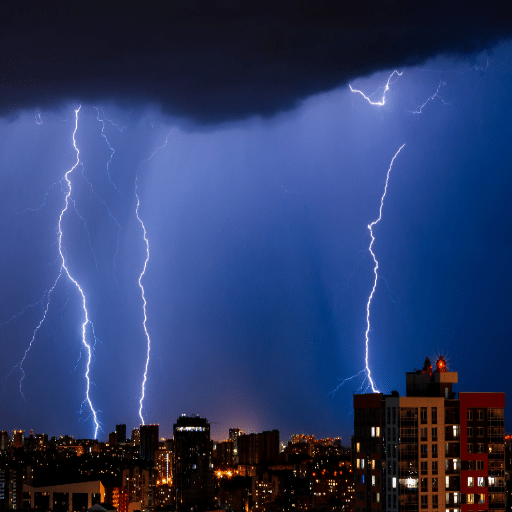
Gas stations are built with safety provisions that greatly lessen the hazards of thunderstorms. But still, the act of pumping gas in a thunderstorm is not entirely without risk, mainly because of the lightning that accompanies the thunderstorm. The occurrence of lightning strikes is not very easy to predict, as gas pumps, though very unusual, might still be hit. When lightning strikes, the resulting spark could be enough to set the highly flammable gasoline and its vapors on fire.
⚠️ Critical Safety Recommendation
To be on the safe side, it is recommended that you do not pump gas while there is an active thunderstorm, especially when lightning is in the area. If you can’t postpone your refueling, then wait for the storm to pass to be sure of your safety. Furthermore, make it a point to observe all gas station safety rules, including not smoking or using electronic devices near the fuel pump, since these could be the cause of an ignition.
Lightning Strikes and Fuel Pumps
Lightning is a natural phenomenon of electrical discharge characterized by the liberation of huge energy, which often reaches temperatures of more than 30,000 Kelvin, which is five times hotter than the sun’s surface. The National Oceanic and Atmospheric Administration (NOAA) estimates that lightning hits the ground around 25 million times each year in the USA. Though gas stations are constructed with several safety precautions, the process of refueling produces vapor that might be the cause of an unsafe situation.
📊 Lightning Strike Facts
Fueling areas where lightning strikes might be a concern, since a lightning bolt hit the ground up to a couple of hundred meters away from the refueling area. The extremely high voltages produced can create heat or sparks strong enough to initiate combustion of the vapors. An investigation into fuel-static electricity relationships at the pump points to such static discharges igniting under the right conditions, thus proving how serious the problem is when it comes to lightning bolts that are much more powerful and energetic.
To curb these risks, the implementation of contemporary safety measures and the futuristic design of infrastructures are necessary. For example, grounding systems are usually employed at fuel pump stations that allow for the safe transfer of electrical charges into the earth. Furthermore, government regulations strictly require the use of less fire-prone materials and coatings in places with a high risk of fire from such fumes. Nevertheless, human mistakes like leaving a car engine running or misusing fuel nozzles can undermine this safety.
Experts recommend no fueling during thunderstorms, and precautions such as checking weather forecasts before going to a gas station and staying put until the storm clears if there is lightning are advisable. These practices, together with the continuous development of safety technology, lead to a significant reduction in the likelihood of accidents. No system can completely get rid of dangers, but adequate consciousness and conduct will lead to fewer lightning hazards near fuel pumps.
Wet Conditions and Safety Hazards
Wet weather, such as rain and the accumulation of moisture, can increase the safety risks in different places. Roads and floors become slippery and thus create an environment where mishaps like slips, trips, and falls are more likely to occur; these are the most common causes of injuries in both the workplace and public places. The National Safety Council reports that slips and falls are responsible for around 8.6 million visits to emergency rooms every year in the USA, thereby emphasizing the gravity of the risk involved.
Moreover, wet weather can be a factor in the functionality of electrical systems and equipment. Water infiltrating the system raises the risk of short circuits, which can lead to total system failures or even start electrical fires. Studies have found that the coming of water into wiring and circuits is still one of the major reasons for electrical failures in both industrial and residential fields. The use of proper insulation and weather-resistant materials is the most crucial step to take to handle the situation.
🚗 Vehicle Safety Statistics
Moreover, the presence of water on the roads greatly affects the safety of vehicles. According to the Federal Highway Administration, wet road surfaces account for almost 75% of weather-related traffic accidents, as per studies. Reduction in tire grip and hydroplaning are the main causes, which again brings up the issue of maintaining the right tires and driving at a safe speed during bad weather. It is very important to mitigate such risks with proper precautions and the use of new technologies, thus reducing the hazards that wet conditions can bring.
Potential for Electrical Issues
Electrical systems in cars are particularly vulnerable to malfunctions or complete breakdowns when the weather is rainy and wet, since moisture has the capability of penetrating the most sensitive parts of the system, like wiring harnesses, sensors, and electrical connectors, leading to short circuits, corrosion, or erratic system performance. The data from the industry indicates that 20% of the electrical failures in vehicles can be attributed to exposure to water or moisture. To give an example, if water gets into the circuits of the headlights, windshield wipers, and defogging systems, these might not work properly in the rainy season.
In order to battle this issue, car makers are using the top-of-the-line sealing methods as well as protective coatings for the electrical systems in order to prevent moisture from getting to the systems. Maintenance of vehicles regularly also including checking and replacing if needed, the insulating materials and seals, is very important. In the meantime, technicians are employing highly sensitive diagnostic tools to catch problems early, which will save the company from either unplanned and hence costly repairs or critical system failures. All these steps taken by the manufacturers guarantee the vehicles will operate at maximum capacity even in the most difficult weather conditions, and thus, the safety and dependability of the car will be doubly assured.
Precautions to Take While Pumping Gas in a Storm
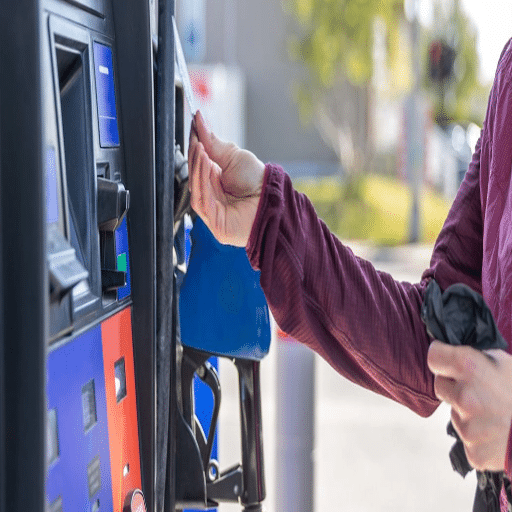
🛡️ Essential Safety Precautions
- Avoid Pumping Gas During Lightning: Lightning creates sparks around fuel, and therefore, it is very dangerous. If you are in the area of the lightning, just wait until the storm stops before getting gas.
- Do Not Use Electronic Devices: You should not use your mobile phone or any other electronic devices when you are at the pump, because they might be the cause of static electricity.
- Touch Metal Before Pumping: To avoid the accumulation of static electricity, touch a metal part of your car (like the door) before you pick up the nozzle.
- Stay in a Safe Position: Keep close to the car while fueling and don’t go under the metal structures or trees to take cover because these can attract lightning.
- Follow Gas Station Instructions: Respect the safety signs at the pump and ensure that the nozzle is placed securely to avoid spills in wet conditions.
By observing these precautions, one will be both safe and, at the same time, no accidents will happening due to the poor weather conditions.
Choosing the Right Time to Refuel
Choosing the right time to refuel your car can have a huge impact on the safety, cost, and convenience of the whole process. Refueling during the cooler hours of the day, like early morning or late evening, can be quite helpful as there is less fuel evaporation. The fuel efficiency statistics show that the temperatures during the day can increase fuel evaporation, especially in the middle of the day when it is hot, and, consequently, there will be a slight loss of gasoline before it goes into your tank.
From a financial point of view, the price of gas goes up and down during the day and the week. Studies show that gas stations often cut their prices on Mondays, as they frequently follow up the weekend demand spikes with price cuts. On the other hand, weekends, especially from Friday to Saturday, are usually associated with the highest prices because of the increased travel activities.
Safety is also an important factor in the decision of when to refuel. It is advisable not to refuel during storms or other extreme weather situations, as the risks associated with static discharge or lightning are higher. Furthermore, busy traffic periods, e.g., commuter hours, can make the process of getting fuel less convenient and more anxiety-causing, which in turn might lead to accidents in crowded gas stations.
If you consider all these factors when planning your refueling schedule, you will have the best possible experience, that is, safe, cheap, and smooth.
Staying Dry While at the Pump
The weather protection at the pump will involve good preparation and practical measures so that you are not soaked during the bad weather. Based on studies conducted on rain protection methods, the use of a compact, wind-resistant umbrella or a good-quality, water-repellent jacket with a hood can greatly minimize direct contact with rain. For more mobility, some people choose pump-friendly rainwear made up of lightweight, flexible material.
The modern gas stations have been doing partial covering or full canopies over the refueling areas, and these are done to protect the customer from bad weather. Research shows that a little less than seventy percent of the new gas stations built in urban areas come with these weather-proof features. Moreover, the right place for your car under the canopy can help, even during strong winds, to a large extent reduce the exposure to rain.
And last, it is possible to ride the refueling during light or temporary rain instead of strong downpours to further minimize discomfort and the risk of getting wet. Weather applications and short-term hourly forecasts are excellent for the timing of fueling activities to let them coincide with the best conditions. Comfort and safety can be maintained with these steps, no matter what the weather is like.
Using Proper Safety Gear
Using the right safety gear during fueling in bad weather is the best way to ensure and maximize personal protection and efficiency. First of all, opt for a waterproof jacket with a hood for the rain and eye contact, and the vision will be clear underneath. Non-slip, water-resistant gloves are also suggested as they offer a strong grip on the pump handle even if the conditions are wet. Footwear with slip-resistant soles is of utmost importance for preventing injuries on the wet and slick surfaces surrounding the fueling station. Wearing reflective clothing can also help a lot since it will almost certainly make you more visible in low-light weather conditions, thus improving your safety among vehicles and other possible dangers significantly. Along with these, the use of proper safety gear mitigates exposure to the environmental elements and risks associated with the refueling process.
Alternatives to Pumping Gas During Severe Weather
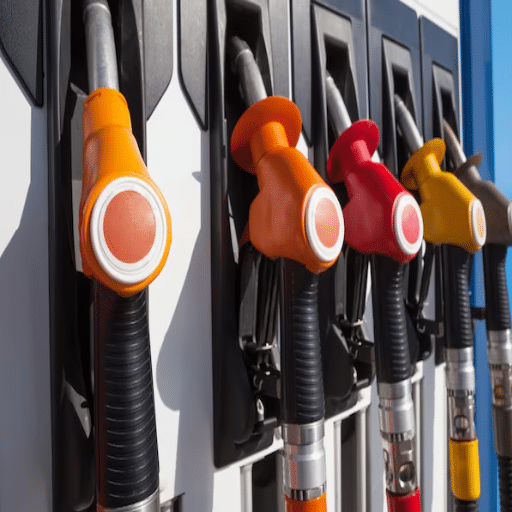
One of the most excellent options to avoid pumping gas in case of inclement weather is to get ready and fill up the tank when the weather is safe and stable. If planning is impossible, then you should opt for full-service gas stations where the staff can handle the pumping for you, allowing you to stay less exposed to the brutal elements. In addition, certain mobile fuel delivery services will drive the fuel right to your door, thus giving you a safe and practical choice during bad weather. The two methods reduce dangers and protect your safety.
Staying Safe at Home Until the Storm Passes
Being safe and sound in your home during severe weather events will require careful preparation and following the already existing safety rules. Start securing your property against possible damage by strengthening windows and doors, and checking your attic and roof for spots that could be leaky or that might cause structural problems. Also, have an emergency kit ready to go, and don’t forget to include basic items like water (minimum one gallon per person per day for three days), non-perishable food, a lamp with extra batteries, a first aid kit, and important medicines. It is very important that each member of the household has enough supplies for 72 hours according to the emergency responders’ recommendations.
Keep an eye on the weather developments through trustworthy sources and make sure that communication devices are always charged. A battery-powered or hand-crank radio is a good investment for a case of power outages to stay updated on local conditions. Backup your power supply with a generator, but make sure to run it outside and in an area where the wind can disperse the fumes to avoid the risk of carbon dioxide poisoning. Furthermore, mark the place in your house that you will share a refuge with your family when the situation becomes really bad—ideally, an interior room with no windows, preferably on the lowest floor.
Environmental data shows that storms commonly cause flooding. Displacement of electrical appliances and hazardous materials management are examples of flood risk mitigation. If your neighborhood is susceptible to flooding, sandbags and flood barriers should be part of your strategy. Lastly, water should not even be able to touch your important documents; therefore, have a document kit containing your legal and financial records in waterproof storage. By taking these detailed precautions, individuals and families can significantly enhance their safety until the storm subsides.
Using Delivery Services for Fuel
Fuel delivery services have come to be the most favored and unproblematic option, especially in cities and during times of crisis. These services are using mobile apps and online interfaces that link the consumers to the closest fuel suppliers, providing the customers with both comfort and protection. The global fuel delivery market has been estimated to have a CAGR of about 6.5% from 2023 to 2030, according to recent industry data, which is the result of the increased demand for on-demand services and improvements in digital infrastructure.
By opting for these services, customers do not have to wait in gas station lines anymore, and their time and effort are reduced. The fuel delivery companies that work are usually very strict in following safety rules set for carrying and storing the fuel, and they follow laws like DOT 49 CFR standards in the U. S. which makes the delivery of fuel very safe. Usually, the customers can ask for the fuel of their choice, like gasoline, diesel, or even special ones like eco-friendly biodiesel, which is for both personal and commercial uses.
To make it even more convenient, a lot of platforms offer cashless payment options, real-time tracking, and the ability to set up automatic refill scheduling through subscription models. The new technology is especially beneficial in places where stations are few, or in similar industries like construction and logistics that need bulk fuel directly delivered to the job site. With the help of these services, both people and companies can make their fuel management easier and at the same time not disturb their daily activities much.
Planning for Fuel Needs
To ensure there is enough fuel during all those times, it is necessary to make a thorough assessment of the consumption patterns, storage capacity, and, lastly, the suppliers’ reliability. Start with the most basic and analyze the historical data of fuel usage to determine the trends and periods of peak demand. With this information, companies will be able to predict their requirements very accurately and hence avoid running out of fuel. Following this, consider the adoption of automated systems like telematics and IoT monitoring for real-time fuel level tracking and refill scheduling prediction. A very important factor in the fuel supplier selection process is the supplier’s reliability, as it guarantees not only timely delivery but also competitive pricing and, last but not least, quality assurance. Furthermore, it is wise for companies to look into bulk or subscription-based fuel delivery agreements in order to gain procurement efficiency and cost savings. Besides, investing in plans for contingencies such as reserve fuel stock or alternative power sources will not only be a good practice, but it will also serve to strengthen the operational resilience of the business during unexpected disruptions.
What to Do if Caught in a Thunderstorm While Pumping Gas
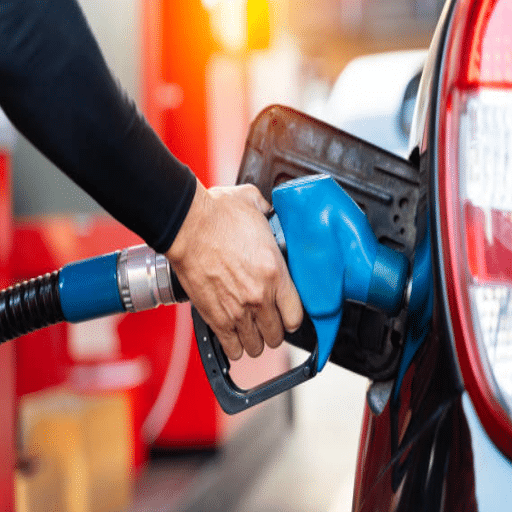
| Action Step | What to Do | Why It’s Important |
|---|---|---|
| Stop Pumping Immediately | At the sign of lightning or if you hear thunder, stop the gas supply immediately | Lightning can get to the pumping area through metal or air, making outdoor filling dangerous |
| Stay Inside Your Vehicle | Move to your car immediately after turning off the pump | Your car’s metal frame creates a Faraday cage for lightning protection |
| Avoid Contact with Metal | Don’t touch metal parts or areas connected to the outside | Reduces chance of lightning current flowing through you |
| Wait for Storm to Pass | Stay in your car until thunderstorm has completely gone | Ensures complete safety before resuming activities |
By obeying these guidelines, you will be safer in a thunderstorm while your vehicle is receiving fuel.
Immediate Actions to Take
In the unfortunate event that you are fueling your vehicle and get caught in a thunderstorm, safety should be your primary concern, and the following immediate actions should be taken:
- First of all, stop fueling the vehicle – The moment you hear thunder or see lightning, just stop pumping fuel. Always very carefully put back the nozzle on the pump after you have finished and lock the fuel tank cap right away to avoid any spillage or vapor escape.
- Then, move to your car – Embrace your vehicle straight away, making sure that all the doors are closed and the windows are up. The car acts like a Faraday cage that minimizes the risk of lightning penetrating the vehicle.
- Avoid Metal Contact – Do not touch metal surfaces in the car or outside. This could provide a lightning strike a path into the interior of the vehicle.
- Keep an Eye on the Weather Conditions – Use a good weather tracking app or tune the local radio to get updates. Do not leave your car until the storm has passed completely over the area; wait for at least 30 minutes after the last lightning strike.
Taking these actions quickly and with certainty will help to ensure that safety during a thunderstorm at a fueling station is at maximum.
Assessing the Surrounding Environment
During a thunderstorm, when assessing the environment, one should take into consideration the most important factors in order to decrease the risk. Potential hazards need to be recognized first; these may be tall buildings, lonely trees, or vast lands because they are more likely to be struck by lightning. Do not be near metal objects, fences, or poles that might be used as conductors. Next, look at the ground and make sure that you are not standing in a low-that is prone to flooding because heavy rain could flood such places very quickly. Also, keep away from puddles and wet areas since these could heighten the danger of electrical conduction.
On the other hand, considering the situation of places that are enclosed, grounded, or vehicles where you can take cover if required is good. Enclosures with proper grounding, such as buildings with lightning protection systems or solid metal-roofed vehicles, provide a safer environment during storms. Being fully aware of your surroundings and quickly withdrawing from hazardous areas will significantly lower the likelihood of being hurt by the elements during a thunderstorm.
Ensuring Your Vehicle is Safe
In the event of a thunderstorm, if you are driving a car, the car can provide a fairly safe area because of its metal structure that functions like a Faraday cage, guiding the electrical currents around the surface and then safely into the ground. To ensure maximum protection, keep all windows tightly shut and do not contact any metal parts inside the car. Drive to the shoulder, far from tall trees, poles, or other structures that might fall or that lightning might strike. Do not go out unless it is extremely necessary, and do not park on the hilltop or near the water to be safe from floods or lightning. When conditions improve and it is safe to move, do so carefully because wet roads can also be an additional driving hazard.
Making Safe Choices While Driving in Stormy Weather
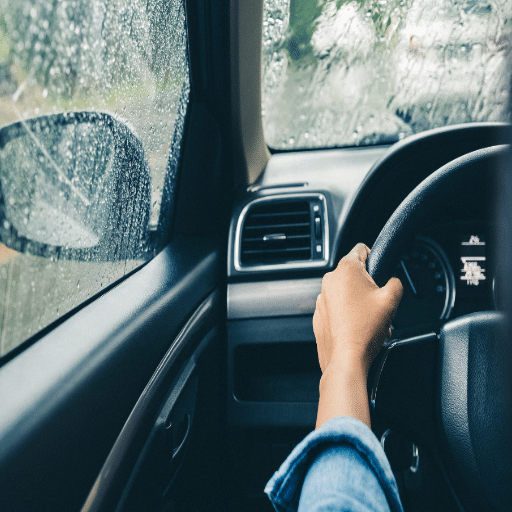
Safe Driving Checklist:
- Reduce Speed: Slower driving allows better control and more time for response to sudden changes like debris on the road or water pooling.
- Increase Following Distance: Add more space between your car and the others for safe braking on wet or slippery roads.
- Use Headlights: Switch on low-beam headlights to make visibility better and also make sure other drivers can see you.
- Avoid Standing Water: Drive around deep puddles or areas that are covered with water because they can conceal dangers or cause your car to hydroplane.
- Stay Alert: Keep a constant watch on your surroundings for changing road conditions, falling debris, or other vehicles losing control.
- Pull Over if Necessary: If the visibility is extremely low or the conditions deteriorate, then you should pull over safely and wait till it’s safe to proceed. Turn on your hazard lights to make yourself more visible to others.
Preparing Your Vehicle for Bad Weather
It is of utmost importance to have a vehicle that is capable of withstanding extreme weather conditions to ensure a safe ride. To make a car, truck, or SUV pleasantly and safely fit for the season, the following detailed steps should be taken:
| Vehicle Component | Preparation Steps | Purpose |
|---|---|---|
| Tires | Check pressure and tread depth regularly. Tread must be at least 4/32″ for snow conditions | Ensure traction on wet or icy roads |
| Brakes | Test for immediate response and listen for unusual noises | Prevent longer stopping distances on slippery surfaces |
| Fluids | Top off windshield washer fluid (freezing-rated) and check coolant levels | Prevent damage and maintain visibility |
| Lights & Battery | Check all exterior lights are working and clean; test battery power | Maintain visibility and prevent battery failure in cold |
| Emergency Supplies | Flashlight, jumper cables, blankets, water, food, first-aid kit, snow shovel | Survival essentials if stuck in severe weather |
| Windshield Wipers | Check performance; replace if streaking. Consider heavy-duty winter wipers | Clear visibility through snow and rain |
| Heating & Defrost | Verify heating and defrost systems are working properly | Keep warm and maintain clear window visibility |
Adopting the aforementioned measures might not only improve the vehicle’s performance but also enhance the safety aspect, thereby giving the driver full confidence in conquering any meteorological challenges.
Importance of Staying Updated on Weather Conditions
In the first place, staying updated on weather conditions is key to ensuring my safety and being prepared while driving. Regularly checking the forecasts helps me to foresee some dangers like snow, ice, or heavy rain and change my driving plans based on that. This preventive move allows me to make some decisions based on information, such as selecting the safest routes, postponing the trip if needed, or getting the car ready for the anticipated conditions.
Final Thoughts on Refueling Safely
🔒 Essential Refueling Safety Practices
The process of refueling vehicles safely involves the follow-up of a defined set of practices that have been established for this purpose; they help to reduce risks. The engine of your vehicle should always be turned off before you begin to put fuel in it; this is to prevent accidental ignition. Besides, do not smoke or bring any open flames close to the gas pump, as this will eliminate any fire risks. You can do this by touching the metallic part of your car; this way, you will not carry any static electricity before you reach the nozzle. Furthermore, make sure that only your fuel containers that are approved are the ones being used, and place them securely on the ground while pouring to prevent static build-up. In the event of a spill, clean it up immediately and don’t start the engine until the area is safe. Following these basic rules makes refueling fast and incident-free.
Reference Sources
“Cross Tropopause Transport of Water by Mid-Latitude Deep Convective Storms: A Review”
Frequently Asked Questions (FAQs)
Is it safe to pump gas in a thunderstorm?
In general, thunderstorms are considered dangerous for pumping gas. Lightning, for instance, can be a huge risk as gasoline fumes are very flammable and lightning can strike very close by. So, you should wait till the thunderstorm has moved away before going outside.
What should you do if you need to pump gas during a storm?
In case you find yourself in a storm where you have to pump gas, try to hold it off till the rain slows down. But if you really have to, then make sure you are in a safe spot, far away from lightning-attracting tall buildings.
Can you drive safely to the gas station in heavy rain?
Heavy rain usually results in poor driving conditions because of reduced visibility and slippery roads. So if the rain is just too heavy, it is better to remain indoors until the weather gets better before attempting to drive to the gas station.
Are there any risks of gasoline leaks during a thunderstorm?
There’s a potential for gasoline leaks at the pump sometimes, particularly when the pump is malfunctioning or if you have spilled some gas. Rain will intensify this problem as it will wash away the gasoline, which in turn may affect the environment adversely.
What harm can come from pumping gas in a thunderstorm?
One of the main dangers associated with gas pumping during a thunderstorm is explosion since the gasoline vapors may be ignited by a lightning strike. That’s why it is a good practice to stay away from gas stations whenever there is a thunderstorm.
How much water can affect the safety of pumping gas?
Heavy rain can cause water accumulations around the gas pumps, creating a slippery environment, which dangerously increases the chances of an accident occurring. Additionally, if water gets into the fuel system, it may cause huge losses as the repair of the damage may be quite costly.
What should you do if lightning hits near a gas station?
In case of a lightning strike near the gas station while you are pumping gas, you should turn off your gas pump, evacuate the vicinity, and get into the building. Also, it would be better for you if you kept your distance from the pump and any metal structures.
How can I ensure my safety while filling my tank in bad weather?
To fill up your tank safely in bad weather, first check the road conditions, and then you can make your decision. If it’s bad, simply wait for the storm to pass. Always stay away from the pump if there is lightning around.

